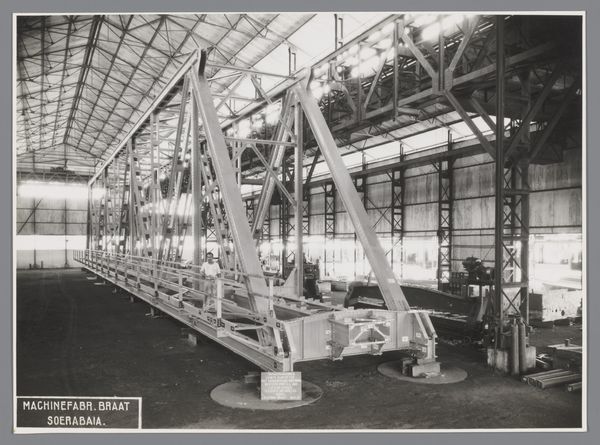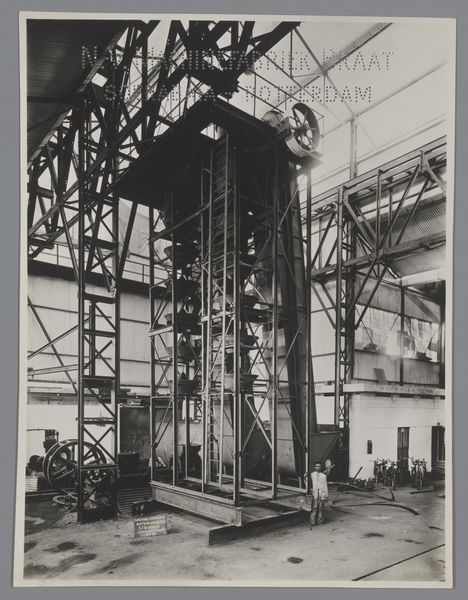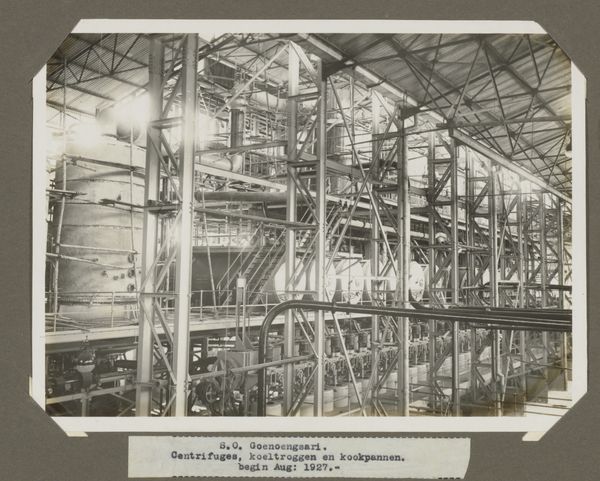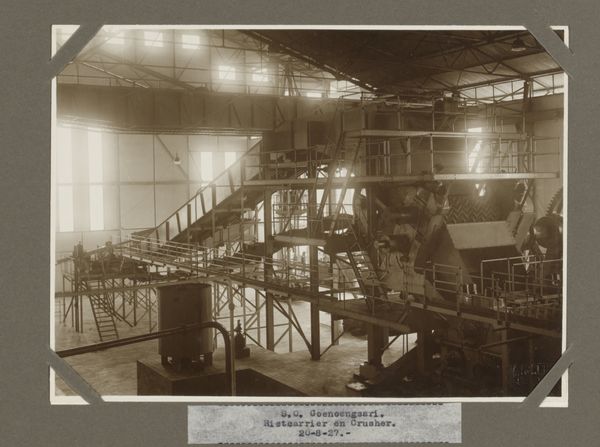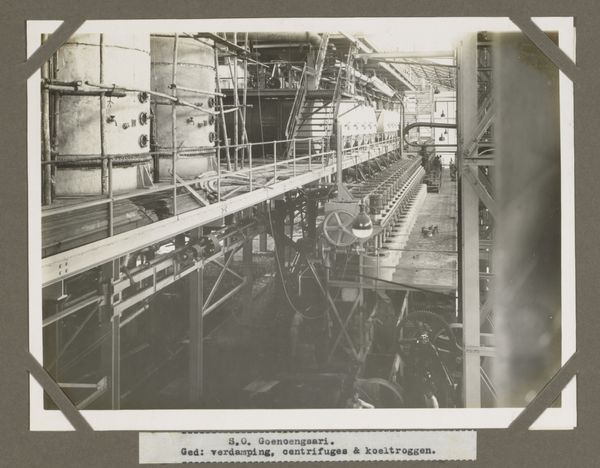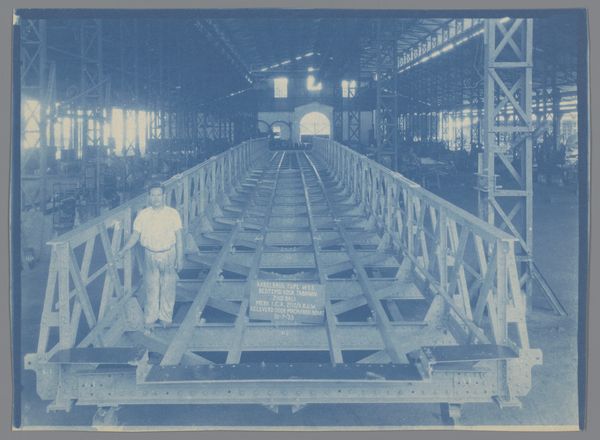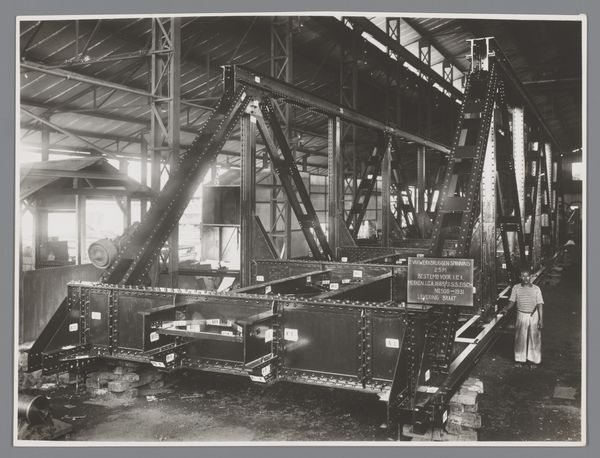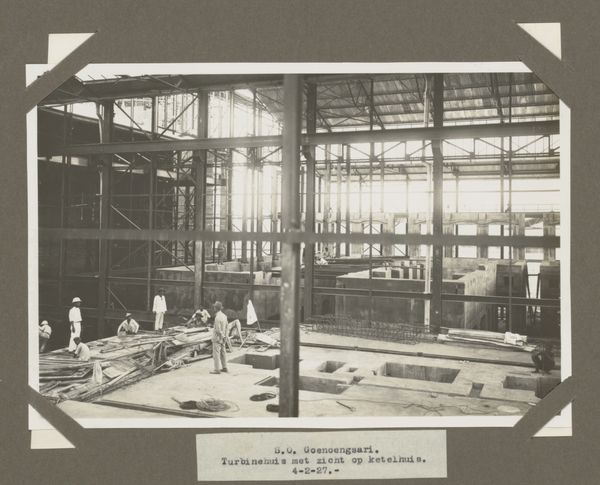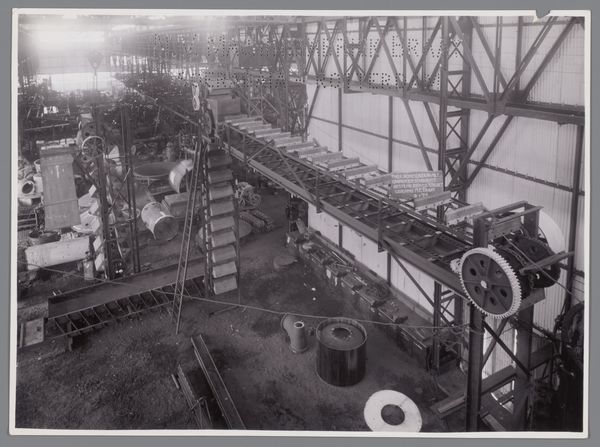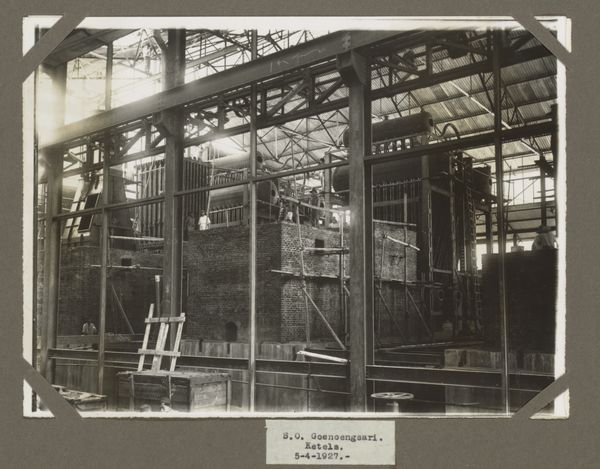
metal, photography
#
metal
#
form
#
photography
#
geometric
#
constructionism
#
line
#
architectural proposal
#
cityscape
#
structured
#
modernism
Dimensions: height 231 mm, width 174 mm
Copyright: Rijks Museum: Open Domain
Curator: The artwork we are looking at today is a photograph titled "Vakwerkwandbrug," potentially taken in 1937. It resides here at the Rijksmuseum and offers a compelling view of, it seems, some kind of metal construction. Editor: My first impression is a sense of stark industrial might. The scale is immense, the crisscrossing metal beams suggest a futuristic yet brutal functionality. I am sensing echoes of both dynamism and containment within the image. Curator: Indeed. Looking closely, the geometric lines and repetitive structures align it with the principles of constructionism. This movement aimed to reflect modern industrial society and urban space, turning functional objects into things of beauty in themselves. What visual symbols catch your eye? Editor: The bridge under construction obviously functions as a primary signifier of progress, and, literally, bridging distances. However, note also the man in the left of the photograph. Human presence emphasizes the magnitude of industrial achievement, with geometric metal latticework looming both structurally and symbolically. There's a certain dehumanization present, a sacrifice for "progress". Curator: Precisely. The image was produced around 1937. Factories were critical to both economic growth and military preparedness. But consider that this construction happened at the twilight of Dutch colonial control of what is today Indonesia. Editor: Very relevant contextual information. I can't help but think about how the symbolic promise of bridges, connectivity and construction masked other societal currents—that dehumanizing progress. I see, perhaps unconsciously for the photographer, that it symbolizes both hope and ominous constraint. Curator: I agree. The location of "Machinefabr. Braat Soerabaia" now Surabaya is an inescapable aspect when discussing this work's impact, both during its historical time period, and even its aesthetic meaning today. Editor: Ultimately, the enduring strength of such pieces, is, perhaps paradoxically, its inherent polysemy—an openness to a myriad of symbolic and historical readings across generations. It prompts reflection on the cultural, economic, and human costs associated with our collective construction. Curator: Well said. Looking at the piece through both historical and symbolic lenses reveals many things about ourselves and how imagery and architecture can play a social and public role.
Comments
No comments
Be the first to comment and join the conversation on the ultimate creative platform.
